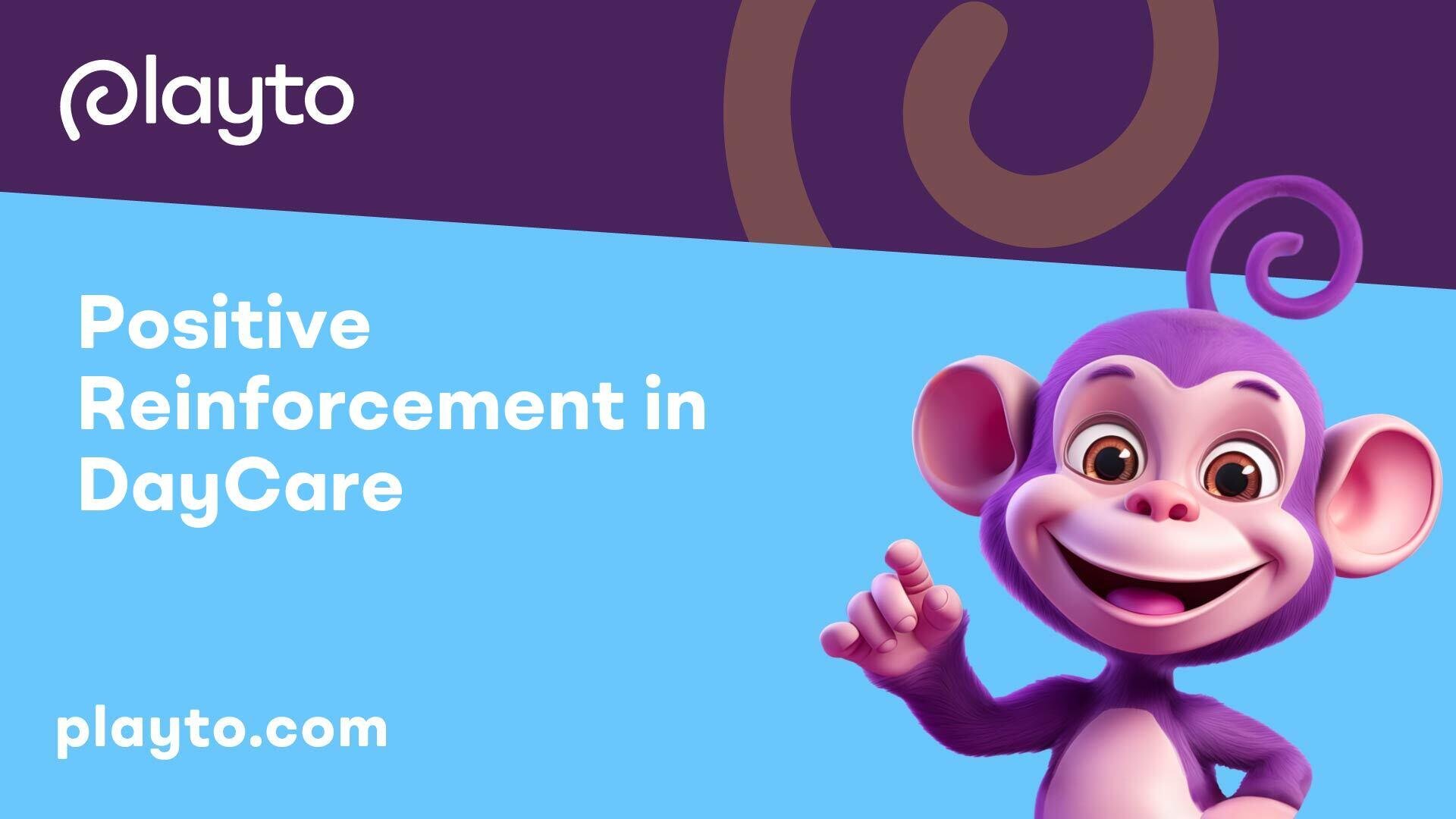
The Power of Positive Reinforcement
Positive reinforcement plays a vital role in child development, offering a constructive approach to shaping behavior and fostering a supportive environment in daycares. Understanding the importance of positive reinforcement is key to promoting positive behaviors and emotional well-being among children in daycare settings.
Importance in Child Development
The value of positive reinforcement lies in its ability to transform conflicts into opportunities for learning and growth. Rather than focusing on blame and punishment, positive reinforcement focuses on reinforcing desired behaviors, encouraging children to excel and thrive. This approach fosters a safe and nurturing environment where children feel supported and valued.
Effective positive reinforcement techniques are particularly beneficial for children who may struggle with behaviors such as staying focused, taking turns, or completing tasks [2]. By highlighting and affirming positive behaviors, caregivers can guide children towards constructive actions and help them develop critical social and emotional skills.
Benefits of Positive Reinforcement
The benefits of positive reinforcement extend beyond behavior modification to encompass emotional well-being and overall child development. Social reinforcement techniques, including verbal praise, written approval, and communication with parents, can significantly motivate children and foster a positive classroom atmosphere.
Research by Barbara Fredrickson highlights the impact of positive emotions on child happiness and well-being, suggesting a ratio of 5 positive reinforcements to 1 negative reinforcement for optimal results. By focusing on positive reinforcement, caregivers can create a nurturing environment where children feel valued, supported, and encouraged to grow and learn.
Incorporating positive reinforcement techniques, such as behavior charts and reward systems, allows children to track their progress, set goals, and reinforce positive behaviors. These tools not only enhance motivation but also provide visual reminders for children and parents to acknowledge and celebrate achievements, fostering a culture of positivity and growth in daycare environments.

Techniques for Positive Reinforcement
When it comes to implementing positive reinforcement strategies in a daycare setting, various techniques can be utilized to encourage desired behaviors in children. These techniques include social reinforcement, privilege-based reinforcement, and material tangible reinforcements.
Social Reinforcement
Social reinforcement techniques focus on using verbal and non-verbal praise, comments, and written approval to motivate children. By acknowledging and celebrating their good behavior, children feel valued and encouraged to continue exhibiting positive actions. Creating a supportive and nurturing environment where children feel recognized for their efforts can significantly impact their self-esteem and overall behavior.
Privilege-Based Reinforcement
Privilege-based reinforcement involves rewarding children with special privileges for demonstrating good behavior. This can include allowing children to select a friend to join them in a fun activity or granting them additional playtime for following daycare rules effectively. By offering exclusive privileges, children are incentivized to maintain positive conduct and strive for recognition within the group [3].
Material Tangible Reinforcements
Material tangible reinforcements encompass providing actual items or prizes to children as rewards for their positive actions. This can involve setting up a classroom economy where children earn tokens or rewards for displaying desired behaviors. It is crucial to ensure that the rewards provided are age-appropriate and appealing to the children to maintain their interest and motivation. Tangible rewards can range from stickers and small toys to certificates of achievement, promoting a sense of accomplishment and reinforcing positive behavior.
In a daycare environment, the effective combination of social reinforcement, privilege-based reinforcement, and material tangible reinforcements can create a positive and encouraging atmosphere for children to thrive. It is essential to tailor these reinforcement techniques to suit the individual needs and preferences of each child, as every child responds differently to various forms of positive reinforcement. By implementing a balanced mix of these techniques, daycare providers can nurture a supportive and constructive environment that promotes positive behavior and growth in children.

Positive Reinforcement Strategies
In the realm of positive reinforcement within daycare settings, utilizing effective strategies is key to promoting desirable behaviors in children. Let's explore two prominent techniques: behavior charts and reward systems, along with the importance of praising effort over personality traits.
Behavior Charts and Reward Systems
Behavior charts and reward systems are valuable tools that can significantly impact children's behavior positively. These methods provide a visual representation of goals and achievements, encouraging children to track their progress and stay motivated. According to Positive Psychology, these techniques help clarify expectations for both children and parents, promoting a focus on positive behaviors.
Creating a structured system with clearly defined criteria for earning rewards can enhance children's understanding of desired behaviors and motivate them to strive for success. By consistently reinforcing positive actions through praise and rewards, children develop a sense of accomplishment and are more likely to continue exhibiting the desired behaviors.
Implementing behavior charts and reward systems in daycare settings not only fosters a positive learning environment but also empowers children to take ownership of their actions. By celebrating their achievements, children build self-confidence and learn the value of perseverance in reaching their goals.
Praising Effort vs. Personality Traits
When offering praise to children in daycare, it is essential to focus on their efforts and specific behaviors rather than general personality traits. Research suggests that descriptive praise, highlighting the specific actions that led to success, is more meaningful and beneficial for children's development [5].
Rather than generic phrases like "good job," recognizing and acknowledging the specific actions that children took to achieve a positive outcome, such as "you did a great job pushing in your chair and cleaning up your lunch mess," can reinforce their efforts and motivate continued positive behavior. This form of praise emphasizes the process, effort, and actions taken by children, instilling a growth mindset and promoting a sense of accomplishment.
By shifting the focus from innate abilities to the actions that lead to success, children in daycare settings learn to value effort, persistence, and improvement. Positive reinforcement through targeted and specific praise promotes a growth-oriented mindset, encouraging children to take on challenges, learn from mistakes, and strive for continuous growth and development.
Implementing Positive Reinforcement
When it comes to fostering a positive environment in daycare settings, the implementation of positive reinforcement plays a crucial role in shaping children's behaviors and development. Two key aspects of effective positive reinforcement are consistency and frequency, along with tailoring approaches to meet the individual needs of children.
Consistency and Frequency
Consistency and frequency are fundamental pillars of positive reinforcement that are essential for creating a lasting impact and encouraging repeated desired behavior in children. According to St Peter’s Prep, maintaining a consistent approach to reinforcing positive behaviors helps children understand expectations and reinforces the value of those behaviors.
Consistency involves following through with praise and rewards every time a child exhibits the desired behavior, reinforcing the connection between the action and the positive outcome. It provides children with a clear understanding of what is expected of them and increases the likelihood of them repeating the behavior in the future. Frequency, on the other hand, ensures that positive reinforcement is not a one-time occurrence but a continuous process that helps solidify the desired behaviors over time.
Tailoring to Individual Children
Each child is unique, with varying personalities, learning styles, and needs. Therefore, it is essential to tailor positive reinforcement strategies to suit the individual characteristics of each child. One approach may not work for all children, as what motivates one child may not have the same effect on another.
By customizing positive reinforcement methods to cater to the specific strengths, interests, and challenges of each child, educators and caregivers can ensure that the reinforcement is meaningful and impactful. This personalized approach not only acknowledges the diversity among children but also helps in building a strong rapport between the child and the caregiver, fostering trust and mutual understanding.
When positive reinforcement is tailored to individual children, it can lead to a more positive and supportive environment in daycare settings. Children feel seen, heard, and valued for their unique qualities, which in turn enhances their self-esteem and confidence. By recognizing and reinforcing the strengths and efforts of each child, educators can help them thrive and develop essential skills for various stages of life.
Consistency, frequency, and individualized approaches are key elements in successful positive reinforcement in daycare. By implementing these strategies effectively, educators and caregivers can create a nurturing and empowering environment that supports children's growth, autonomy, and emotional well-being.
Positive Reinforcement in Daycare
In a daycare setting, positive reinforcement plays a vital role in shaping children's behavior and fostering a nurturing environment. By creating a supportive atmosphere and focusing on building confidence and autonomy, daycare providers can enhance the overall development and well-being of the children under their care.
Creating a Supportive Environment
Positive reinforcement in daycare involves immediately rewarding good behavior shown by children to increase that desired behavior. This can be in the form of treats, stars on a chart, or other forms of recognition, creating a sense of accomplishment and motivation for the children. By consistently acknowledging and reinforcing positive behavior, daycare providers help children feel safe, connected, and valued within their learning environment.
Building a supportive environment goes beyond just acknowledging good behavior. It involves creating a space where children feel respected, encouraged, and understood. By promoting a culture of positivity and inclusion, daycare centers can empower children to explore, learn, and thrive in a safe and nurturing setting. This sense of security and acceptance fosters a positive self-image and belief in their abilities, ultimately leading to improved academic performance and productivity [2].
Building Confidence and Autonomy
Positive reinforcement not only boosts children's confidence but also encourages healthy self-esteem. By recognizing and rewarding positive behavior, children develop a sense of pride in their accomplishments, fostering a growth mindset and the motivation to persist in their learning journey. When children feel supported and valued, they are more likely to engage actively in activities, express themselves confidently, and take initiative in their learning experiences.
Empowering children to make choices, set goals, and take ownership of their actions also plays a crucial role in building autonomy. By providing opportunities for children to make decisions and exercise independence within appropriate boundaries, daycare providers help them develop essential life skills and a sense of responsibility. This balance of support and autonomy not only nurtures children's development but also lays the foundation for their future success and well-being.
By focusing on creating a supportive environment and promoting confidence and autonomy, daycare centers can cultivate a positive and enriching experience for children. Through consistent positive reinforcement and nurturing interactions, children can flourish, grow, and thrive in a caring and empowering daycare setting.
Challenges and Considerations
As with any approach to childcare, there are certain challenges and considerations to be mindful of when implementing positive reinforcement in daycare. It is important to strike a balance between encouraging positive behavior and addressing potential negative impacts of such reinforcement strategies.
Potential Negative Impacts
While the intention behind positive reinforcement is to nurture desirable behaviors in children, there are potential negative impacts that caregivers need to be aware of. One such impact, as highlighted by Rainbows United, is the inadvertent reinforcement of children seeking constant adult approval. This can lead to a dependency on external validation for their actions, potentially hindering their ability to develop intrinsic motivation. Over-reliance on external validation may also impact a child's self-esteem and self-efficacy levels.
It is important to be cautious of unintentionally reinforcing negative behaviors by providing attention, even if it is perceived as negative attention. Children may repeat undesired behaviors to seek more attention, thus reinforcing those behaviors. Caregivers should carefully consider their responses to such behaviors, ensuring that the safety and well-being of the child are always the top priority. Ignoring certain behaviors rather than reinforcing them with attention may sometimes be a more effective strategy.
Individual Responses to Reinforcement
Understanding that each child responds differently to reinforcement is crucial in a daycare setting. While positive reinforcement can be effective for many children, individual responses may vary. Some children may be highly motivated by praise and rewards, while others may not be as responsive to these strategies. Caregivers need to be attentive to the unique needs and preferences of each child, tailoring their reinforcement techniques accordingly.
By acknowledging and addressing the potential negative impacts of positive reinforcement, daycare providers can create a nurturing environment that supports the holistic development of children. It is essential to promote intrinsic motivation, independence, and self-confidence while being sensitive to individual differences in responses to reinforcement strategies. For more insights on fostering independence in daycare, explore our article on building independence in daycare.
References
[2]: https://mybrightwheel.com/blog/positive-reinforcement-in-the-classroom
[3]: https://www.positiveaction.net/blog/positive-reinforcement-in-the-classroom
[4]: https://positivepsychology.com/parenting-positive-reinforcement/
[5]: https://rainbowsunited.org/benefits-downfalls-of-positive-reinforcement/
[6]: https://rainbowsunited.org/benefits-downfalls-of-positive-reinforcement
